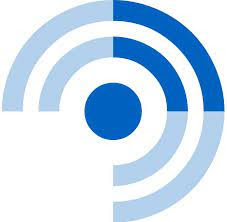
The company says the new system significantly reduces common AI pitfalls such as hallucinations, inconsistent instruction-following, and sycophancy, where models agree with users uncritically rather than providing fact-based responses.
GPT-5 is built as a unified system that can decide when to respond quickly and when to 'think' for complex problems. A real-time router evaluates the complexity of each prompt, the tools required, and user intentâ€"for example, when someone explicitly asks it to 'think hard' about a question.
"Once usage limits are reached, a mini version of each model will handle the remaining queries," OpenAI said in a blog post on Thursday, August 7, 2025, adding that it eventually plans to incorporate these capabilities into a single, integrated model.
The upgrade boosts performance in three of ChatGPT's most popular uses: writing, coding, and health.
For developers, OpenAI says GPT-5 delivers its strongest coding abilities yet, capable of handling complex front-end projects, debugging large repositories, and producing more refined designs in layout, typography, and white space. The company highlights its ability to generate fully functional, visually polished websites, apps, and games from a single prompt.
A key focus of GPT-5 is minimising sycophancy, ensuring the model delivers independent, evidence-based answers rather than mirroring user beliefs. Combined with reduced hallucinations, OpenAI says this makes the system more trustworthy and useful for factual, high-stakes queries.
GPT-5 is available now to all ChatGPT users, with Plus subscribers getting higher usage limits and Pro subscribers gaining access to GPT-5 Pro, a variant with extended reasoning capabilities for more complex and detailed queries.
How GPT-5 compares with its rivals
The launch comes amid intensifying competition in the AI sector. Google's Gemini Ultra and Meta's LLaMA 3 have made significant gains, forcing OpenAI to push performance forward to maintain its edge.
Against Gemini Ultra, GPT-5 is competitive on reasoning and coding but still faces a rival strong in real-time web access, multimedia handling, and deep integration with Google's ecosystem.
Against LLaMA 3, GPT-5 offers far larger context windows (up to one million tokens versus around 32,000) and better out-of-the-box performance, while Meta's open-source model appeals to developers wanting full control and customisation.
On the other hand, compared to xAI's Grok, GPT-5 boasts superior multimodal capabilities and an advanced reasoning router for complex problem-solving. Grok focuses on real-time interaction within Elon Musk's X ecosystem, emphasising conversational AI that blends social media engagement with language tasks. While Grok is rapidly evolving, GPT-5 currently leads in versatility and the breadth of applications beyond social platforms.
According to analysts, OpenAI needed GPT-5 to address longstanding user complaints, most notably hallucinations, memory limitations, and the tendency to agree with incorrect statements. The company is also looking to advance toward artificial general intelligence (AGI) while defending market share from rapidly improving rivals.

Wycliffe Nyamasege
